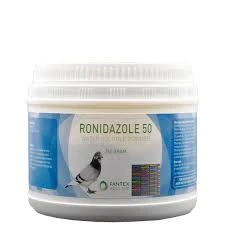
اکتبر . 10, 2024 21:22 Back to list
coccidiosis disease in poultry factory
Coccidiosis Disease in Poultry Factories An Overview
Coccidiosis is a significant parasitic disease affecting poultry, particularly in intensive farming operations such as poultry factories. This infectious disease, caused by various species of the protozoan parasites known as Eimeria, poses a substantial threat to the health of birds and the economic viability of poultry producers. Outbreaks of coccidiosis can lead to severe financial losses due to increased mortality, reduced growth rates, and the costs associated with treatment and prevention.
Understanding Coccidiosis
Coccidiosis commonly occurs in young birds, with clinical signs usually appearing between three weeks and six months of age. The disease is characterized by diarrhea, poor weight gain, and, in severe cases, sudden death. Infected birds may exhibit lethargy, decreased feed intake, and reduced egg production in laying hens. The primary transmission route for the disease is fecal-oral; the birds ingest oocysts, the resilient stage of the parasite, through contaminated feed, water, or litter.
There are several species of Eimeria that infect poultry, each targeting different sections of the intestinal tract. The most notable among them include Eimeria tenella, Eimeria acervulina, and Eimeria brunetti, each contributing to varying clinical symptoms and effects on bird health. Understanding the specific Eimeria species present is critical for effective management and treatment.
Economic Impact
The economic ramifications of coccidiosis in poultry factories are significant. Outbreaks can lead to decreased productivity and increased mortality rates, which directly affect the profitability of poultry operations. Estimates suggest that coccidiosis and its associated management costs can account for substantial percentages of losses in commercial poultry settings. The disease can lead to increases in veterinary costs, medicated feed, and labor associated with disease management.
Notably, the implications extend beyond the immediate financial losses; they also impact the broader food supply chain. Reduced availability of healthy poultry can lead to higher prices for consumers and may affect food security, especially in regions heavily reliant on poultry as a protein source.
coccidiosis disease in poultry factory

Prevention and Control Measures
Effective management of coccidiosis in poultry factories revolves around a multi-faceted approach. Strategies include strict biosecurity measures, proper management practices, and the use of coccidiostats in feeds to prevent outbreaks.
1. Biosecurity Maintaining a clean environment is vital. Regular cleaning and disinfection of housing, equipment, and feeding areas can help reduce the load of oocysts. Proper disposal of litter and dead birds also minimizes the chance of re-infection.
2. Management Practices Farmers should practice good management techniques, including appropriate stocking densities. Overcrowded conditions can exacerbate the spread of coccidiosis. Additionally, maintaining optimal environmental conditions, such as temperature and humidity, can help support the birds' immune systems.
3. Use of Coccidiostats Incorporating coccidiostats into feed can help control the proliferation of Eimeria. However, the use of these drugs must be carefully managed to avoid resistance. Rotating the types of coccidiostats used in feed can also help prevent the development of resistant strains of the parasite.
Conclusion
Coccidiosis remains a persistent challenge in the poultry industry, particularly within factory farming settings. Its ability to cause extensive economic damage and threaten poultry health necessitates proactive management. By implementing rigorous biosecurity measures, adopting best practices in poultry management, and utilizing appropriate medications, poultry producers can mitigate the risks associated with coccidiosis. Ultimately, enhancing our understanding of this disease is crucial for safeguarding poultry health and ensuring the sustainability of poultry production in the face of both economic and environmental challenges. Continued research and education on effective prevention and control strategies will be essential as the industry evolves and confronts new challenges.
-
Top Hemoglobinuria Manufacturer & Supplier Reliable Hemoglobinuria Factory Solutions
NewsJun.24,2025
-
Premium Honeysuckle Products - Leading Honeysuckle Manufacturer & Supplier Factory
NewsJun.10,2025
-
Pulmonary Edema Solutions from Leading Manufacturer & Supplier Reliable Factory Price
NewsJun.10,2025
-
Red Eyes - Leading Red Eyes Manufacturer & Supplier, Premium Quality Factory Price
NewsJun.10,2025
-
Broiler Ascites Syndrome Solutions Top Manufacturers
NewsJun.10,2025
-
Premium Amoxicillin Suppliers Reliable Biomox Mexican Factories
NewsJun.10,2025




